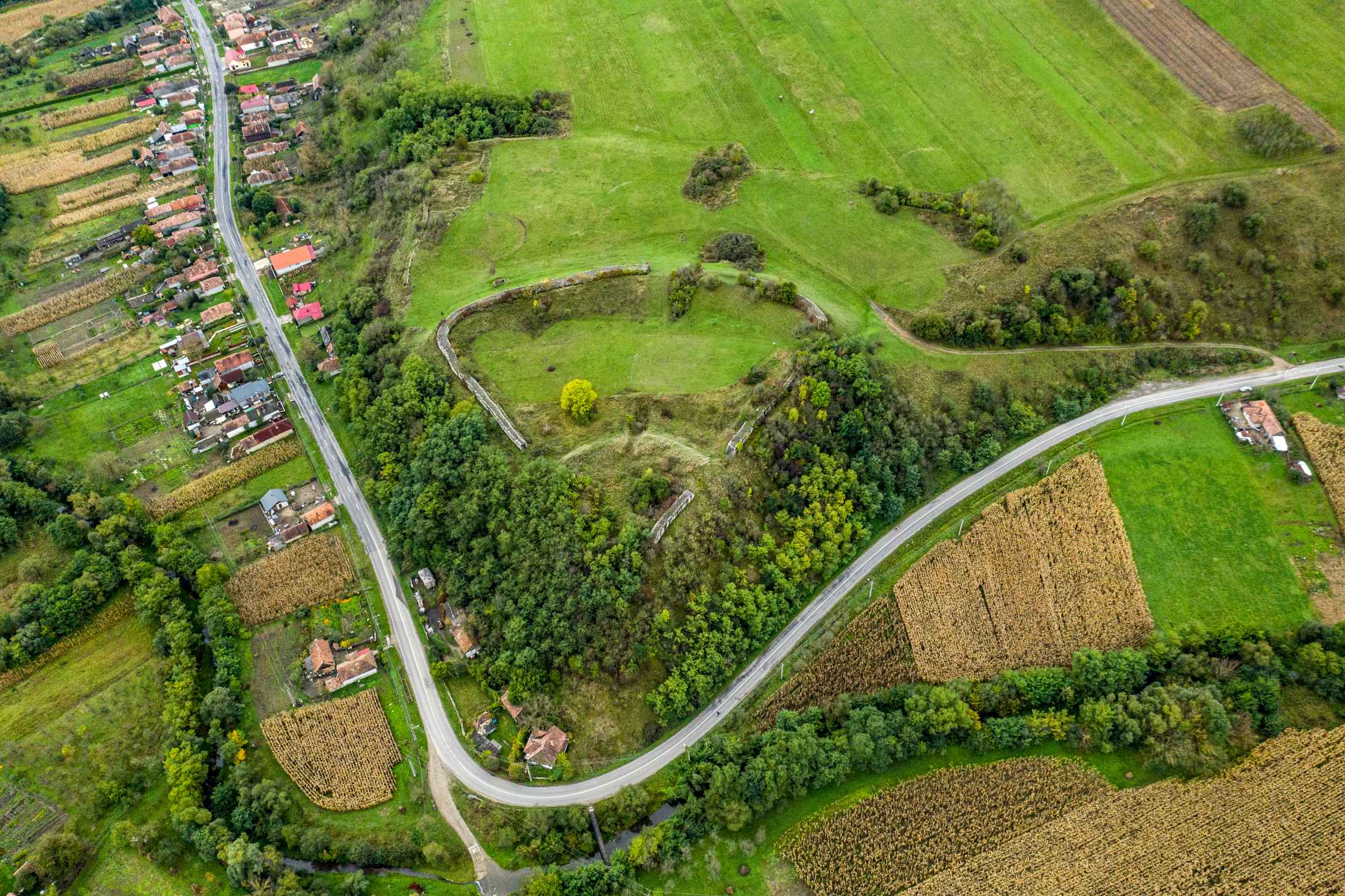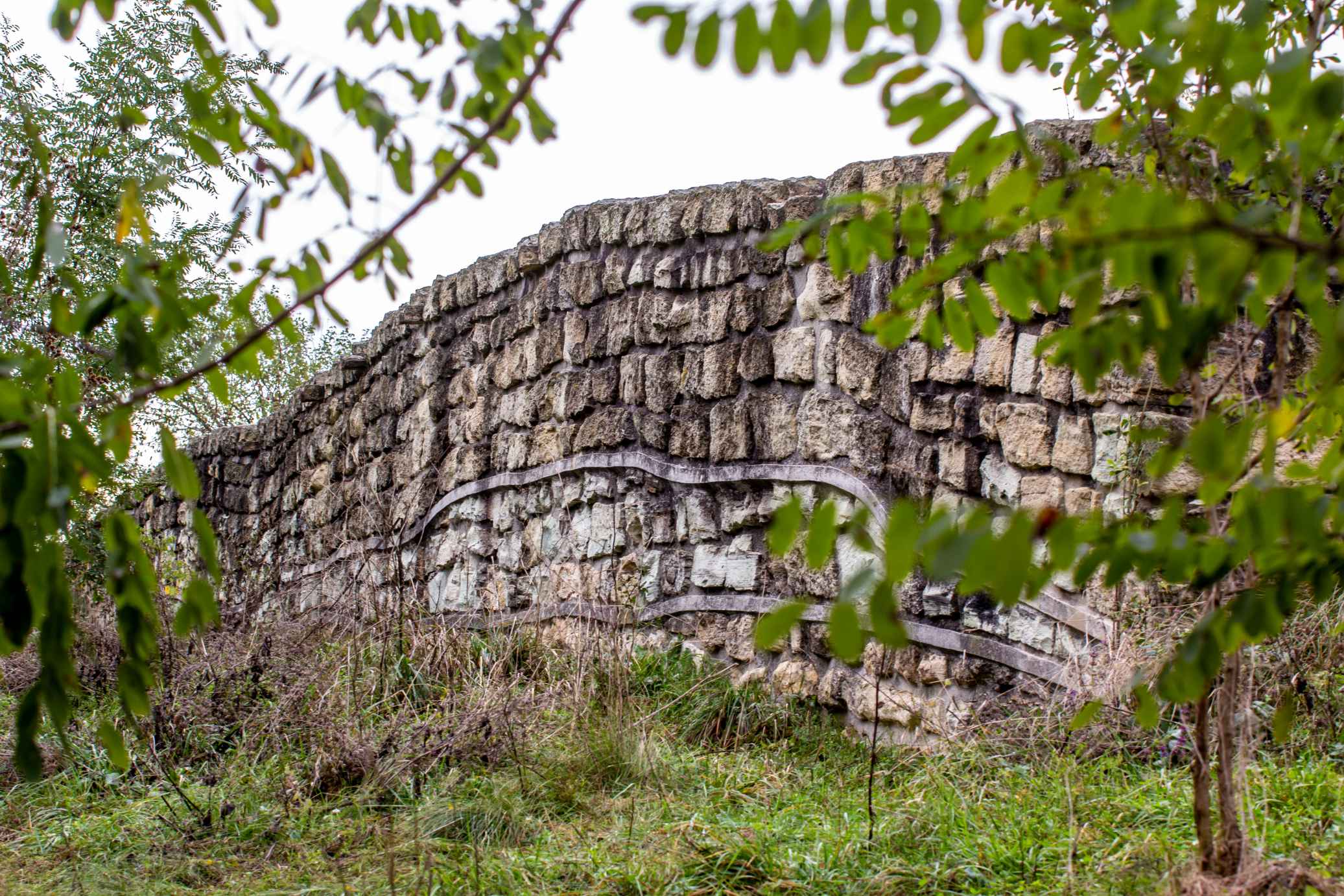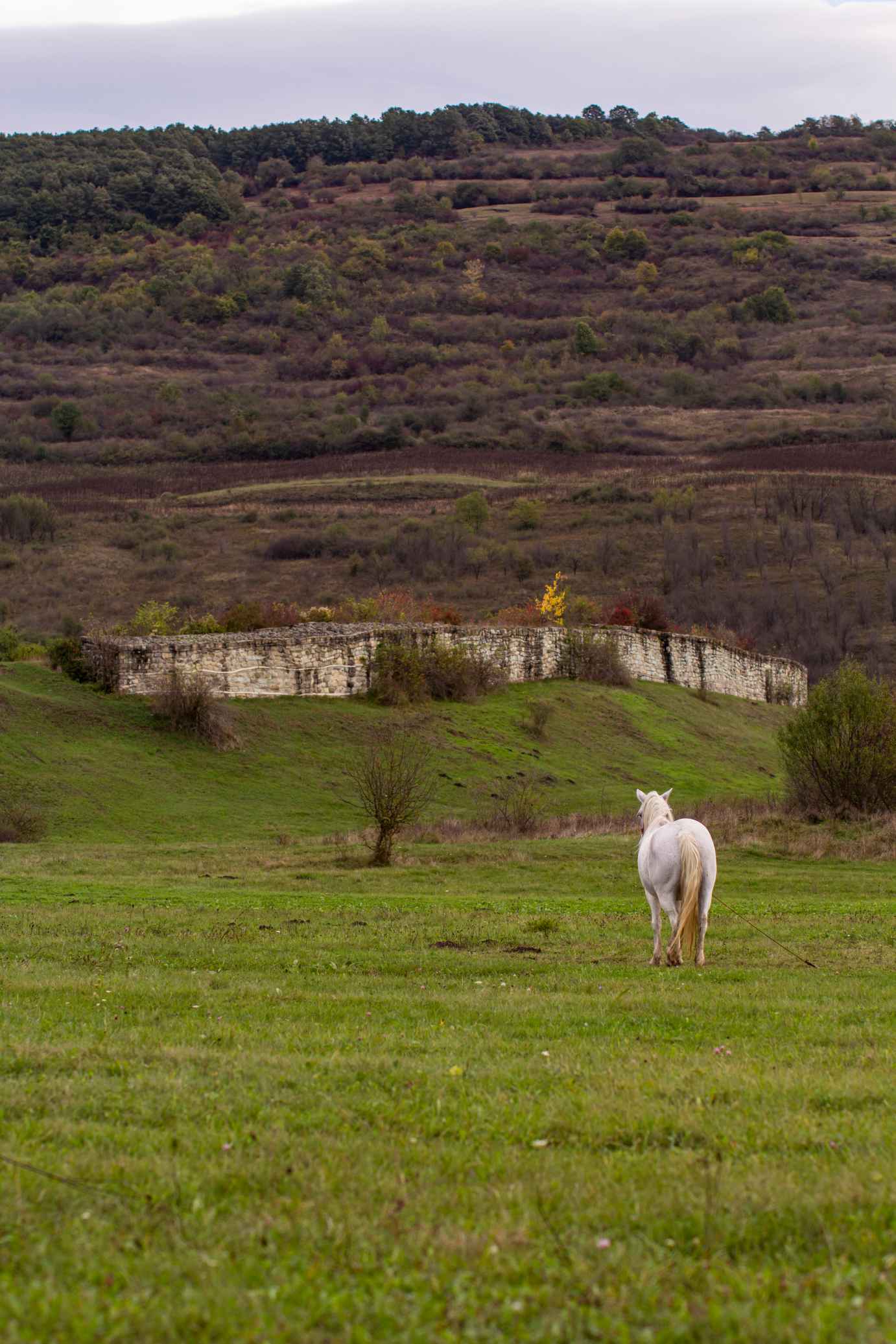Dăbâca Castle
Historic Monument Code: CJ-I-s-A-07027
The small fortification of Dăbâca played an important role in the Middle Ages, signalled by the fact that it gave its name to a Transylvanian administrative unit: Dăbâca County (after 1876, Solnoc-Dăbâca County), the existence of which was first attested indirectly, by mentioning Eustachius, count of Dăbâca, in 1164.
The castle’s beginnings are debated even today, with several theories regarding its dating or the political entities that had built and used it. The existing rift in the Romanian and Hungarian scholarship is mainly due to its role in the historical narrative.
However, it was without any doubt the power centre of one of the first royal counties established in Transylvania as part of the Hungarian Kingdom. Among its main objectives was the control and safeguarding of the surrounding territory, important due to the salt mines in the area (Sic, Ocna Dej) and to the road (Roman, then mediaeval) passing through the Someșul Mic Valley. The churches and cemeteries discovered here had belonged to the populos castri, i.e. the populations serving the county centre. The village developed near the castle, Dobokawarfalua, is mentioned for the first time in 1279. The castle reached its peak in the 12th century, functioning until the 15th and 16th centuries (castellans are still mentioned in 1472, as well as during the reign of Queen Isabella Iagiellon), with certain signs of decline already in the 13th century, as it ceased to be a royal possession.
The fortification with 4 outlined areas is located on a triangular plateau, the walls adapting to its shape. It had several construction phases, first as an earthen fortress and then, possibly from the 12th or 13th centuries, as a stone castle completed with gate towers and a keep with an irregularly shaped rectangular ground plan.
Astăzi se vede doar un zid modern construit pe structurile vechi ale incintei de secol 13, înalt de 2 m, realizat în anii 1960 ca rezultat al unei cercetări arheologice. Cetatea aflată în proprietatea administrației locale poate fi vizitată.
Today only a modern, 2-metre-high wall is visible, which was built in the 1960s on the old, 13th century structures, as a result of the archaeological researches. The monument owned by the local administration can be visited.
Extra:
- According to the chroniclers of the 14th century, prior to the 1068 Battle of Chiraleș against the Pechenegs, King Solomon of Hungary (reign 1063-1074), in the company of Dukes Geza (later King Geza I, reign 1074-1077) and Ladislaus (later King Ladislaus I or Saint Ladislaus, reign between 1077-1095) stopped in urbe Doboka, i.e. at Dăbâca Castle, the centre of the homonymous county. The event (though of secondary importance within the narrative) is part of the Legend of Saint Ladislaus (canonized in 1192), which narrates the rescuing of a girl kidnapped by the Cumans (originally Pechenegs, but in the texts these came to be replaced in time with the Cumans, who posed a more recent eastern threat), a legend painted on the walls of countless mediaeval churches throughout the Hungarian Kingdom.





